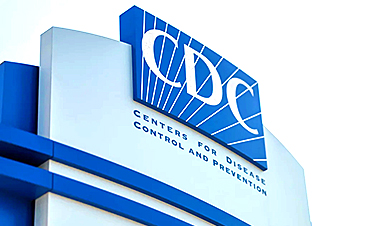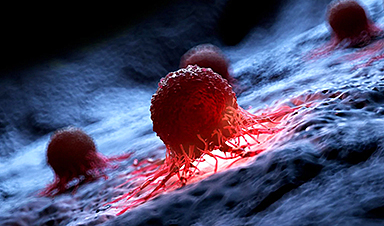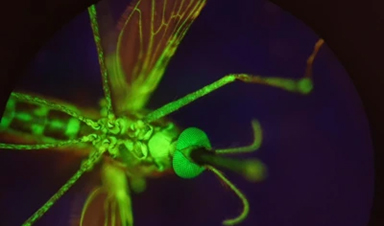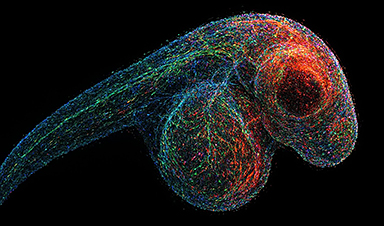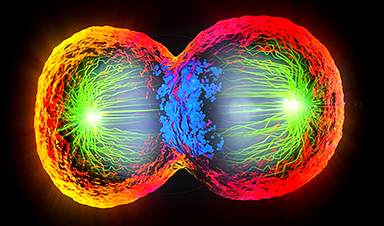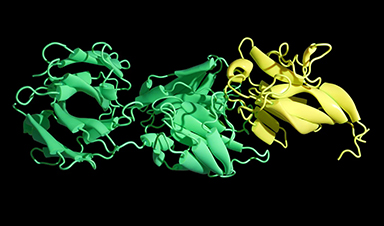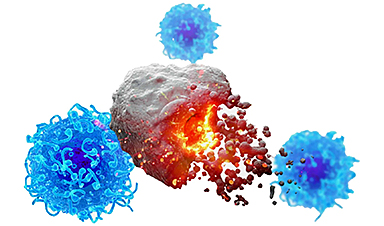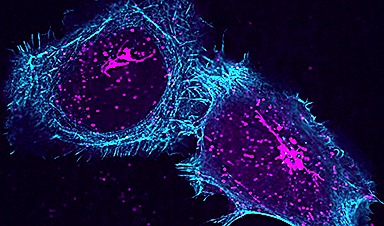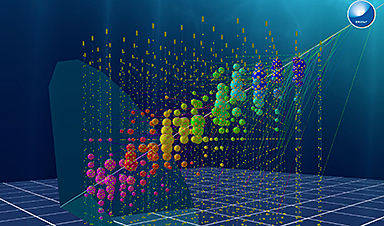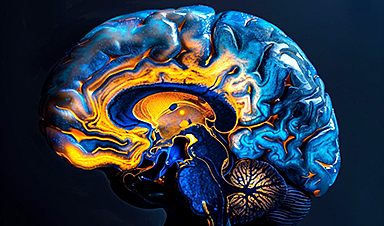

The EVONANO platform allows scientists to grow virtual tumors and use artificial intelligence to automatically optimize the design of nanoparticles to treat them.
The ability to grow and treat virtual tumors is an important step towards developing new therapies for cancer. Importantly, scientists can use virtual tumors to optimize design of nanoparticle-based drugs before they are tested in the laboratory or patients. The paper, “Evolutionary computational platform for the automatic discovery of nanocarriers for cancer treatment,” is published today in the Nature journal Computational Materials.
The paper is the result of the European project EVONANO which involves Dr. Sabine Hauert and Dr. Namid Stillman from the University of Bristol, and is led by Dr. Igor Balaz at the University of Novi Sad.
“Simulations enable us to test many treatments, very quickly, and for a large variety of tumors. We are still at the early stages of making virtual tumors, given the complex nature of the disease, but the hope is that even these simple digital tumors can help us more efficiently design nanomedicines for cancer,” said Dr. Hauert.
Dr. Hauert said having the software to grow and treat virtual tumors could prove useful in the development of targeted cancer treatments.
“In the future, creating a digital twin of a patient tumor could enable the design of new nanoparticle treatments specialized for their needs, without the need for extensive trial and error or laboratory work, which is often costly and limited in its ability to quickly iterate on solutions suited for individual patients,” said Dr. Hauert.
Nanoparticle-based drugs have the potential for improved targeting of cancer cells. This is because nanoparticles are tiny vehicles that can be engineered to transport drugs to tumors. Their design changes their ability to move in the body, and correctly target cancer cells. A bioengineer might, for example, change the size, charge or material of the nanoparticle, coat the nanoparticles with molecules that make them easy to recognize by cancer cells, or load them with different drugs to kill cancer cells.
Using the new EVONANO platform, the team were able to simulate simple tumors, and more complex tumors with cancer stem cells, which are sometimes difficult to treat and lead to relapse of some cancer patients. The strategy identified nanoparticle designs that were known to work in previous research, as well as potential new strategies for nanoparticle design.
As Dr. Balaz highlights: “The tool we developed in EVONANO represents a rich platform for testing hypotheses on the efficacy of nanoparticles for various tumor scenarios. The physiological effect of tweaking nanoparticle parameters can now be simulated at the level of detail that is nearly impossible to achieve experimentally.”
The challenge is then to design the right nanoparticle. Using a machine learning technique called artificial evolution, the researchers fine tune nanoparticle designs until they can treat all scenarios tested while preserving healthy cells to limit potential side-effects.
News
This Startup Says It Can Clean Your Blood of Microplastics
This is a non-exhaustive list of places microplastics have been found: Mount Everest, the Mariana Trench, Antarctic snow, clouds, plankton, turtles, whales, cattle, birds, tap water, beer, salt, human placentas, semen, breast milk, feces, testicles, [...]
New Blood Test Detects Alzheimer’s and Tracks Its Progression With 92% Accuracy
The new test could help identify which patients are most likely to benefit from new Alzheimer’s drugs. A newly developed blood test for Alzheimer’s disease not only helps confirm the presence of the condition but also [...]
The CDC buried a measles forecast that stressed the need for vaccinations
This story was originally published on ProPublica, a nonprofit newsroom that investigates abuses of power. Sign up to receive our biggest stories as soon as they’re published. ProPublica — Leaders at the Centers for Disease Control and Prevention [...]
Light-Driven Plasmonic Microrobots for Nanoparticle Manipulation
A recent study published in Nature Communications presents a new microrobotic platform designed to improve the precision and versatility of nanoparticle manipulation using light. Led by Jin Qin and colleagues, the research addresses limitations in traditional [...]
Cancer’s “Master Switch” Blocked for Good in Landmark Study
Researchers discovered peptides that permanently block a key cancer protein once thought untreatable, using a new screening method to test their effectiveness inside cells. For the first time, scientists have identified promising drug candidates [...]
AI self-cloning claims: A new frontier or a looming threat?
Chinese scientists claim that some AI models can replicate themselves and protect against shutdown. Has artificial intelligence crossed the so-called red line? Chinese researchers have published two reports on arXiv claiming that some artificial [...]
New Drug Turns Human Blood Into Mosquito-Killing Weapon
Nitisinone, a drug for rare diseases, kills mosquitoes when present in human blood and may become a new tool to fight malaria, offering longer-lasting, environmentally safer effects than ivermectin. Controlling mosquito populations is a [...]
DNA Microscopy Creates 3D Maps of Life From the Inside Out
What if you could take a picture of every gene inside a living organism—not with light, but with DNA itself? Scientists at the University of Chicago have pioneered a revolutionary imaging technique called volumetric DNA microscopy. It builds [...]
Scientists Just Captured the Stunning Process That Shapes Chromosomes
Scientists at EMBL have captured how human chromosomes fold into their signature rod shape during cell division, using a groundbreaking method called LoopTrace. By observing overlapping DNA loops forming in high resolution, they revealed that large [...]
Bird Flu Virus Is Mutating Fast – Scientists Say Our Vaccines May Not Be Enough
H5N1 influenza is evolving rapidly, weakening the effectiveness of existing antibodies and increasing its potential threat to humans. Scientists at UNC Charlotte and MIT used high-performance computational modeling to analyze thousands of viral protein-antibody interactions, revealing [...]
Revolutionary Cancer Vaccine Targets All Solid Tumors
The method triggers immune responses that inhibit melanoma, triple-negative breast cancer, lung carcinoma, and ovarian cancer. Cancer treatment vaccines have been in development since 2010, when the first was approved for prostate cancer, followed [...]
Scientists Uncover Hidden Protein Driving Autoimmune Attacks
Scientists have uncovered a critical piece of the puzzle in autoimmune diseases: a protein that helps release immune response molecules. By studying an ultra-rare condition, researchers identified ArfGAP2 as a key player in immune [...]
Mediterranean neutrino observatory sets new limits on quantum gravity
Quantum gravity is the missing link between general relativity and quantum mechanics, the yet-to-be-discovered key to a unified theory capable of explaining both the infinitely large and the infinitely small. The solution to this [...]
Challenging Previous Beliefs: Japanese Scientists Discover Hidden Protector of Heart
A Japanese research team found that the oxidized form of glutathione (GSSG) may protect heart tissue by modifying a key protein, potentially offering a novel therapeutic approach for ischemic heart failure. A new study [...]
Millions May Have Long COVID – So Why Can’t They Get Diagnosed?
Millions of people in England may be living with Long Covid without even realizing it. A large-scale analysis found that nearly 10% suspect they might have the condition but remain uncertain, often due to [...]
Researchers Reveal What Happens to Your Brain When You Don’t Get Enough Sleep
What if poor sleep was doing more than just making you tired? Researchers have discovered that disrupted sleep in older adults interferes with the brain’s ability to clean out waste, leading to memory problems [...]



